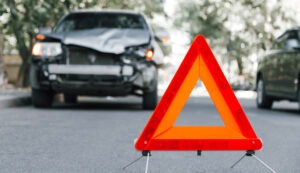
Proving wrongful death requires establishing key elements such as duty of care, breach of duty, and causation. How can you effectively gather and present this evidence? By working with a Fort Lauderdale wrongful death lawyer.
Working with a lawyer can remove a huge burden off of your mind and give you the freedom to grieve without worrying about the financial consequences of your loved one’s death. Here’s how a lawyer works to prove wrongful death.
Key Elements in a Wrongful Death Claim
Proving wrongful death requires establishing several essential elements. We must first demonstrate that your loved one’s death resulted from another party’s negligence, misconduct, or criminal activities.
Duty of Care
The first element we must establish is that the defendant owed a duty of care to the deceased. This duty varies depending on the relationship between the parties and the circumstances of the case:
- Drivers have a duty to operate their vehicles safely and follow traffic laws.
- Medical professionals have a duty to provide care that meets accepted standards.
- Product manufacturers have a duty to ensure their products are safe.
- Property owners have a duty to maintain safe premises for visitors.
- Employers have a duty to provide a safe working environment.
Establishing this duty is the foundation of your wrongful death claim. Without a duty of care, there can be no liability for the death.
Breach of Duty
Once we establish that a duty existed, we must prove that the defendant breached that duty through action or inaction. This breach can take many forms:
- A driver who runs a red light or texts while driving
- A doctor who fails to diagnose a treatable condition
- A manufacturer who sells a product with dangerous defects
- A property owner who neglects to fix hazardous conditions
- An employer who ignores safety regulations
Proving breach often requires comparing the defendant’s behavior to what a reasonable person would have done in similar circumstances. This may involve expert testimony, industry standards, or established legal precedents.
Causation
After establishing a breach of duty, we must demonstrate that this breach directly caused your loved one’s death. This connection between the breach and the death is called “causation,” and it has two aspects:
- Cause in fact: The death wouldn’t have occurred without the defendant’s actions
- Proximate cause: The death was a foreseeable result of the defendant’s actions
Proving causation can be challenging, especially in complex cases involving multiple factors or pre-existing medical conditions. We often work with medical experts, accident reconstructionists, and other specialists to establish this critical link.
Damages
Finally, we must calculate and prove the damages suffered by the survivors and the estate. These damages typically include:
- Lost wages and benefits the deceased would have earned
- Medical expenses incurred before death
- Funeral and burial costs
- Loss of inheritance
- Loss of care, guidance, and nurturing the deceased would have provided
- Loss of love, companionship, and consortium
- Pain and suffering the deceased experienced before death
Calculating these damages requires careful analysis and often involves financial experts who can project future losses and put a dollar value on non-economic damages like loss of companionship.
More people choose The Schiller Kessler Group because they know that we’re a cut above other personal injury law firms.

Establishing Negligence in Wrongful Death Cases
Most wrongful death claims are based on negligence, which occurs when someone fails to exercise reasonable care, resulting in harm to another person. To establish negligence, you must demonstrate that the defendant owed a duty of care, carelessly breached that duty, and this breach directly resulted in the death of your loved one.
Types of Evidence Used to Prove Negligence
Building a strong negligence case requires gathering and presenting compelling evidence. We help you collect various types of evidence, including:
- Police reports and accident investigations
- Medical records and autopsy results
- Eyewitness testimony
- Expert opinions from medical professionals, accident reconstructionists, or industry specialists
- Photographs and video footage
- Cell phone records (in distracted driving cases)
- Employment records (in workplace accident cases)
- Maintenance logs (in premises liability or product defect cases)
This evidence helps paint a complete picture of how the negligence occurred and connects it directly to your loved one’s death.
Proving Intentional Misconduct in Wrongful Death Cases
While many wrongful death cases involve negligence, some stem from intentional wrongful acts that result in death. Examples of misconduct include murder, assault, or drunk driving. Unlike negligence, which is based on carelessness, misconduct is deliberate and purposeful.
Evidence in Intentional Misconduct Cases
Proving intentional misconduct often involves:
- Criminal records and police reports
- Witness testimony about threats or previous violent behavior
- Video surveillance footage
- Physical evidence like weapons or drugs/alcohol
- Communications showing intent or planning
- Expert testimony about the defendant’s mental state
These cases may proceed alongside criminal prosecutions, but it’s important to remember that wrongful death claims are civil matters with different standards of proof and potential outcomes.
Relationship Between Criminal and Civil Cases
When a death results from criminal activity, both criminal and civil cases may proceed:
- Criminal cases are brought by the state to punish the wrongdoer with jail time, fines, or probation.
- Civil wrongful death cases are brought by the survivors to recover monetary damages.
A criminal conviction can strongly support your civil case, but even if the defendant is acquitted criminally, you may still win your wrongful death claim. This is because civil cases require a lower standard of proof (“preponderance of evidence” rather than “beyond reasonable doubt”).
Proving Causation in Wrongful Death Claims
Causation is often the most challenging element to prove in wrongful death cases. You must show that the defendant’s actions or inactions directly led to your loved one’s death, without intervening factors breaking the chain of causation.
Direct vs. Indirect Causation
Causation can be direct or indirect:
- Direct causation occurs when the defendant’s actions immediately cause the death, such as a drunk driver hitting a pedestrian.
- Indirect causation involves a chain of events, such as a doctor prescribing the wrong medication, which leads to an adverse reaction, which ultimately results in death.
In cases of indirect causation, defendants often argue that intervening factors broke the chain of responsibility. We help you demonstrate that despite these intervening events, the defendant’s actions remain the primary cause of death.
Prove Wrongful Death with Our Help
Pursuing a wrongful death claim while grieving can feel overwhelming. If you want to know how do you prove wrongful death, the answer is by working with a wrongful death lawyer. Our team provides compassionate guidance and strong legal advocacy during this difficult time.
We understand that no amount of money can truly compensate for your loss. However, a successful wrongful death claim can provide financial stability, hold wrongdoers accountable, and give you closure to move forward.
You don’t have to prove a wrongful death claim yourself. Contact us today for a free consultation about your wrongful death case.
We’ll listen to your story, explain your legal options, and help you determine the best path forward for you and your family.
Injured? Call The Aggressive Attorneys Today



